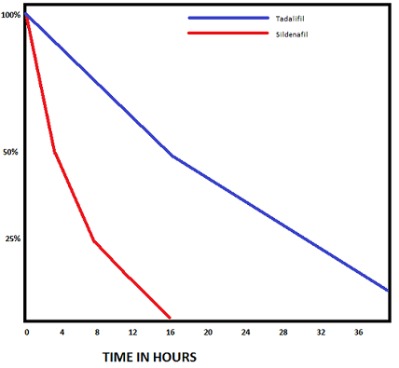

Pharmacokinetics
(Hint: Memorize A.D.M.E.) The components listed above may look standard, but keep in mind that there are several factors that may affect each in different patients. Examples include: age, food or alcohol consumption, interactions with other meds, and many more. Such factors can make a drugs journey through the body in one patient different from another. Certainly, in whatever pharmacy technician program you are enrolled in, this subject will be covered in way more detail. However, on this page we will just be covering the basics. First Order Kinetics (Half-Life)first order kinetics. The concept is mostly used to gauge the speed at which the drug is broken down by the body. The term Half-Life is used because in first order kinetics a constant fraction of the drug in the body is eliminated during a unit of time. The rate of elimination is proportional to the amount of drug in the body. The body will process and eliminate "half" of the blood concentration of the drug every "half-life" period. The more drug present in the bloodstream, the more that is processed and eliminated. To put it another way, for every "half-life" period, the amount of drug in the system is reduced by 50%. For example, let's (hypothetically) take a look at two phosphodiesterase inhibitors. One has a typical "half-life" of 3.5 hours and the other has a "half-life" of 17.5 hours.
 As you can see from the chart, for each "half-life" period (time) that expires, the body breaks down and eliminates 50% of the drug present in the system.
As you can see from the chart, for each "half-life" period (time) that expires, the body breaks down and eliminates 50% of the drug present in the system.Now that you understand how this works, you can see why Tadalafil is called "the weekend pill" and the television ads for the drug do actually make sense. *This example is for informational and entertainment purposes only. Please consult a medical doctor before taking any medication. The statistics on the above chart are for demonstration purposes only and may not be reliable data. Zero Order Kineticszero order kinetics. This concept is also used to gauge the speed at which the drug is broken down by the body. However, it's quite a bit different than first order kinetics. With zero order kinetics, the available rate of elimination is a constant no matter how much the blood concentration is. The most commonly used example is the drug Alcohol. Let's say that you go out to celebrate your birthday and your friends are treating you to your favorite adult beverage. Assuming that each of the drinks has 1 ounce of alcohol and your body can probably metabolize and eliminate about 1 ounce per hour from your system. If over the course of 3 hours you indulge in 7 of the drinks, your system will have a "buildup" of four of the drinks. Since your body can only metabolize 1 ounce per hour, it would take an additional 4 hours for the drug to be eliminated. Pharmacokinetics - Top of page |
||||||||||||||||||||||||||||||||||||||||||



































